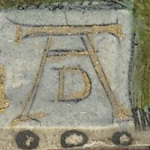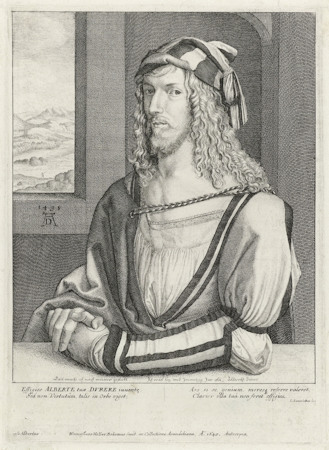
The world has quite a few paintings. But only a handful become seen as true masterpieces. Dürer’s Young Hare is one of them: a renaissance watercolour that now lives in Vienna’s Albertina museum.
- One of the most famous paintings in Europe
- Rarely on public display; last seen in 2020
- …but you might be lucky
- Find other Dürer works in the Kunsthistorisches Museum
- Book Albertina tickets*
- See also:
How can I see the Hare?

(Albrecht Dürer, Hare, 1502; watercolour and gouache, brush, heightened with white gouache; press photo © The Albertina Museum, Vienna)
You can’t actually see it. Well, sometimes you can.
Dürer’s Hare is a sensitive and precious thing, so the Albertina does not have it on permanent display.
Instead, the museum stores our furry friend away under careful conditions to ensure its preservation for future generations. You can usually find a copy displayed in the room at the end of the self-guided tour of the staterooms that comes with an Albertina ticket*.
However, the original wouldn’t be worth preserving at all if we couldn’t see it now and then. And so the hare pops out of its secure burrow every few years or so.

(The poster advertises the last exhibition to feature the hare back in 2019/2020)
The last such occasion was the Albertina’s rather wonderful Dürer exhibition, which ended in 2020. Check what’s on: you might be lucky.
In centuries past, the hare played a significant role in art exhibitions. One newspaper announcing a new Dürer exhibition in Vienna in 1871, for example, included the hare on its list of prominent works to look out for, noting (my translation):
Probably the only real example of this illustration, which can be found as copies in so many collections
The painting
Dürer completed the work in 1502, and we can thank Emperor Rudolf II (1552 – 1612) for bringing it under Habsburg ownership later that century.
Just to put the date of origin into perspective: Henry VIII of England had yet to marry any of his six wives, and the Mona Lisa was just a blank wood panel in a Florence art supplies catalogue.
The Albertina is rightly proud of its animal portrait. You can tell this from a visit to the museum shop, which has its fair share of hare-themed souvenirs.
Dürer’s masterpiece is certainly the museum’s most renowned possession, and I’d rank it as the second most important piece of art in Vienna after Klimt’s Kiss.

(An etching of Albrecht Dürer by the printmaker Wenceslaus Hollar in 1645, based on an earlier self-portrait by Dürer. Image courtesy of the Rijksmuseum)
The relatively small watercolour measures around 25 cm by 22.5 cm, with just the hare and little else. I’ll leave it to the experts to describe the artistic qualities, but it makes quite an impact when you actually see it.
Apart from the simple, yet mind-blowing, idea that it’s over 500 years old, you have the quite remarkable detail: the individual hairs, shades and colours that combine to produce a near-photographic quality to the painting. And not forgetting the accuracy of the bone structure.
Consider the hare’s eyes, for example: expressive and including a reflection of a window within.
Dürer’s AD mark rounds off the visual impression, squatting below the animal like a marketing logo from a time when a brand was something you only found on cattle.
Should you get to see it, the quiet reverence of surrounding onlookers only enhances the viewing experience. All of us know we’re witnessing something rare and beautiful.
So, yes, the Young Hare’s pretty special. Catch it if you can.
Assuming, however, the long-eared object of desire remains under lock and key during your visit to Vienna, the city has another option for those seeking Dürer’s work.
The picture gallery of the Kunsthistorisches Museum usually has selected paintings on permanent display, including Dürer’s 1519 portrait of Emperor Maximilian I.